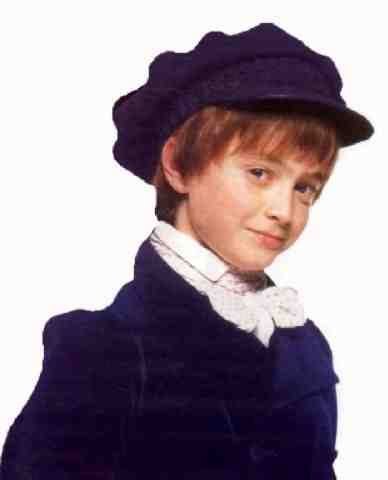
Figure 1.--David is shown here in a characteristic cap and a skeleton suit, the clothes he was most often pictured as. Note the cravat. |

|
David Copperfield is one of Charles Dickens' most famous books and David one of the best loved boy characters in English literature. Charles Dickens published David Copperfield in 1849-50. David is more or less an autobiography of Charles Dicken' own life. More or less meaning that in most cases he does not use actual names, but makes up the scenery and
names of the people. And the basic depiction of Savid's early life in particular is built around Dicjens' experience as a boy. Dickens published David Copperfield in 1849. Thus the clothing styles can be assumed to have been those of the 1840s. As David aged in the book, clothing of the 1830s may be correctly used for David as a boy. Thus David can be correctly shown wearing a skelrton suit. They were, however, going out of style in the 1830s, at least by the late-30s.
Charles Dickens published David Copperfield in 1849-50. David is more or less an autobiography of Charles Dicken' own life. More or less meaning that in most cases he does
not use actual names, but makes up the scenery and
names of the people. The events and general meaning, however, remain the same. To create such an atmosphere and still have it retain the same essential elements of a true autobiography is an act of shear genius. And the basic depiction of Savid's early life in particular is built around Dicjens' experience as a boy.
Charles Dickens is regarded by many as the greatest novelist in the English language. He is especially notable for the wonderfully diverse chracters he created. Among them are some of the most famous boy characters in literary history. Oliver Twist was in fact the first boy character to be the main character of a novel. Dickens authored 15 major novels and
numerous short stories and articles. Oliver David, and Pip are the best known, but many other boys and girls populate his novels. The most memorable are those wounded and in some cases destroyed by poverty, in pat because of his boyhood experiences. The epitat on his tombstone in Poet's Corner, Westminster Abbey reads: "He was a sympathiser to the poor,
the suffering, and the oppressed; and by his death, one of England's greatest writers is lost to the world".
The book is divided into two basic parts: 1)David
as a boy, and 2) David as a young man. David's father dies 6 months before he is born. David and his mother are very close until she marries Mr. Murdstone, who is a cold, mean man who dominates the relationship between David and his mother. Before any of that happens, David spends a few weeks with Peggoty at her brother Dan's house. David meets to kids,
Little Em'ly and Ham. When David's mother dies in still childbirth, his step-father appretices him off to London to work where he meets Wilkins Micawber, who let's David stay with him. He turns out to be a fraud, but does so in such a weird way that it's hard not to like him. Micawber is in great financial trouble, and is always "expecting something to turn up". Micawber is later arrested and sent to debtors prison. David's last stop in his youth is Dover, where he lives with his fathers sister, Betswet Trotwood, who lives with crazy cousin Mr. Dick. David takes to Mr. Dick right off, and he is finally happy. He is sent to live with the Wickfield family, which includes old Mr. Wickfield who is a well off, but alcoholic, businessman; his daughter Agnes who is David's age, and the clerk, Uriah Heep. By the time David graduates from school, Agnes has fallen in love with David (although he doesn't know it yet). Mr. Wickfield has fallen under the influence of the evil Uriah Heep, and Heep has hired Mr. Micawber. David returns to London to become a writer where David meets up with Steerforth whom he once knew in school. The two soon become fast friends. Together, they attend an opera where David is introduced to Dora who will eventually become his bride. The rest of the book deals with David as a young man and how the villian of the book, Uriah Heep, is finally exposed.
Dickens published David Copperfield in 1849. Thus the clothing styles can be assumed to have been those of the 1840s. As David aged in the book, clothing of the 1830s may be correctly used for David as a boy. Thus David can be correctly shown wearing a skelrton suit. They were, however, going out of style in the 1830s, at least by the late-30s. Other clothing items like tunics might be accuate, at least for well-to-do boys going to school. Boys of all ages wore long pants, even fashionably dressed boys from affluent familirs. Headwear might be peaked caps with military styling. Boys also wore suits with vests. The jackets were cut short. Often the jackets did not match the pants. And vests were contrasting. The most definitive source for the proper fashions would of course be the illustrations in the original published version.
There have been several theatrical, movie, and television productions of David Copperfield.
England, 1999
The English 1999 production was an excellent, faithful production with faitful costuming.
Navigate the HBC literary pages' Historical Clothing Web Site:
[Return to the main Main English literary page]
[Our William]
[]
[Jennings]
[Peter Pan]
Navigate the Boys' Historical Clothing Web Site:
[Introduction]
[Activities]
[Biographies]
[Chronology]
[Clothing styles]
[Countries]
[Topics]
[Bibliographies]
[Contributions]
[FAQs]
[Glossaries]
[Images]
[Links]
[Registration]
[Tools]
[Boys' Clothing Home]
